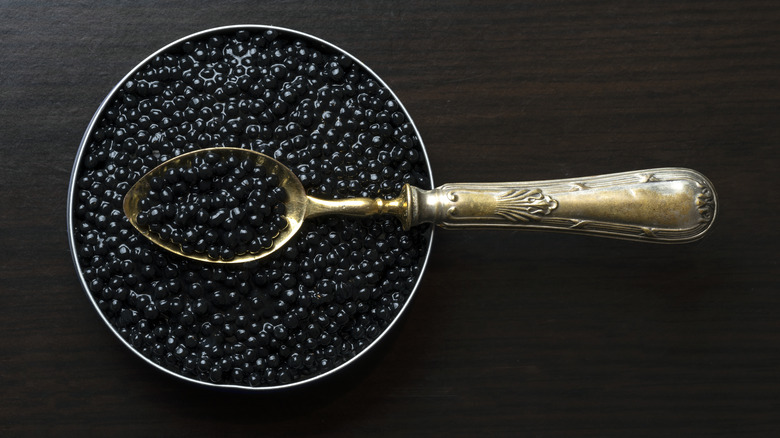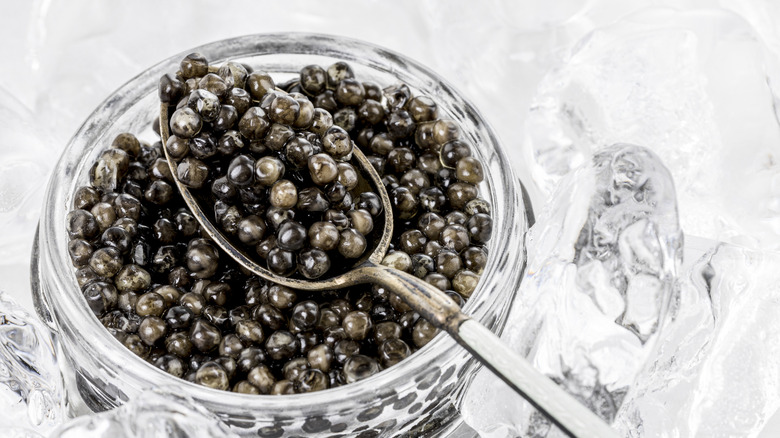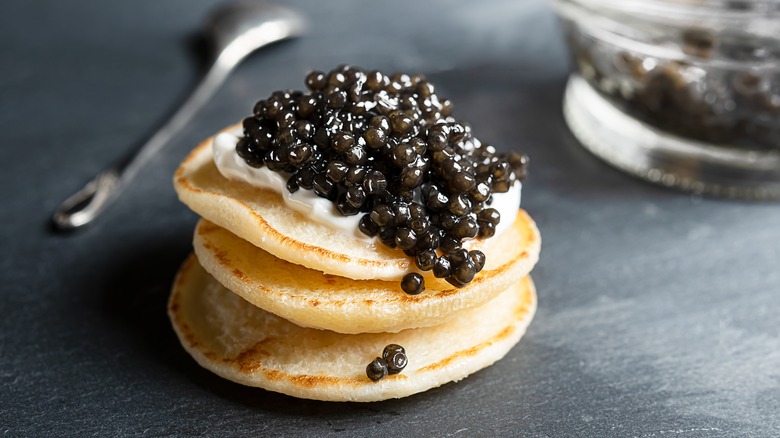Why You Should Think Twice About Eating Caviar With A Silver Spoon
A tin of caviar is an unabashed and expensive luxury deserving of service to match. It makes sense to pair something as rare as sturgeon roe with the finest utensils — but you should think twice about serving caviar on a silver spoon. Go ahead, and it's not just the price that will leave a nasty taste in your mouth; eating caviar from a silver spoon is like licking an oceanic battery, completely obscuring the delicate buttery flavor that makes the delicacy so prized.
Fortunately, there are plenty of alternatives — and while restaurants and caviar purveyors will likely insist on using mother of pearl, it's not necessary to buy a new, fancy spoon to enjoy caviar. A regular old stainless steel spoon won't react with the fish eggs, and the neutrality of a plastic spoon, the kind you might get with a takeaway meal or even a little tub of ice cream, is actually perfect for savoring caviar or scooping it onto your vessel of choice.
The reason silver makes caviar taste bad
Mother of pearl isn't just the caviar spoon of choice because of its marine connotations. It's light, so it is less likely to pop the delicate fish eggs, and it doesn't conduct electricity when it comes into contact with your tongue.
It's this conductivity that makes silver a poor choice for serving caviar, and the conductivity is made more powerful in the presence of salt. This causes that unpleasant chemical, metallic tang, and is why caviar spoons are made from non-reactive materials; these range from luxury metals like gold down to those plastic — or even wooden — spoons. It's important to remember that the silver is the problem, not all metals; caviar is stored in metal tins lined with a non-reactive coating to prevent tarnish.
As such, the abundance of mythmaking around caviar serveware is more about etiquette and pomp than necessity — just avoid silver, and you're good to go.
How to enjoy caviar
If you've gone through the trouble of understanding the difference between caviar and fish roe, it's essential to do the caviar justice when it comes to service — and that doesn't just mean choosing the right spoon.
It's important to keep caviar very cold when storing it, and most refrigerators don't get down to the 28-34 degree range required. You can place gel ice packs around a tin to reach that temperature and serve it on ice. But, just like tempering a steak or enjoying a summer tomato, it's better to let the caviar warm up a bit before service so the full aroma and flavor of the caviar variety you've chosen to try can come to the fore.
Accordingly, when first sampling caviar, have it neat — whether from a non-reactive spoon or, per the returning trend from the early 2000s, your hand similar to the salt-before-tequila method. After that, pick your accouterment of choice, whether blinis, crème fraîche, or even a salty potato chip.


